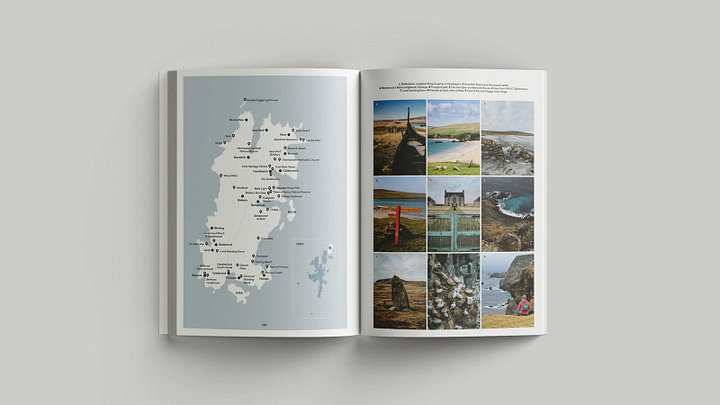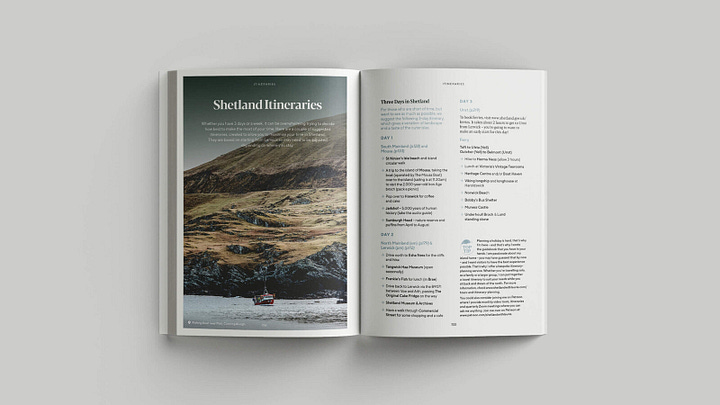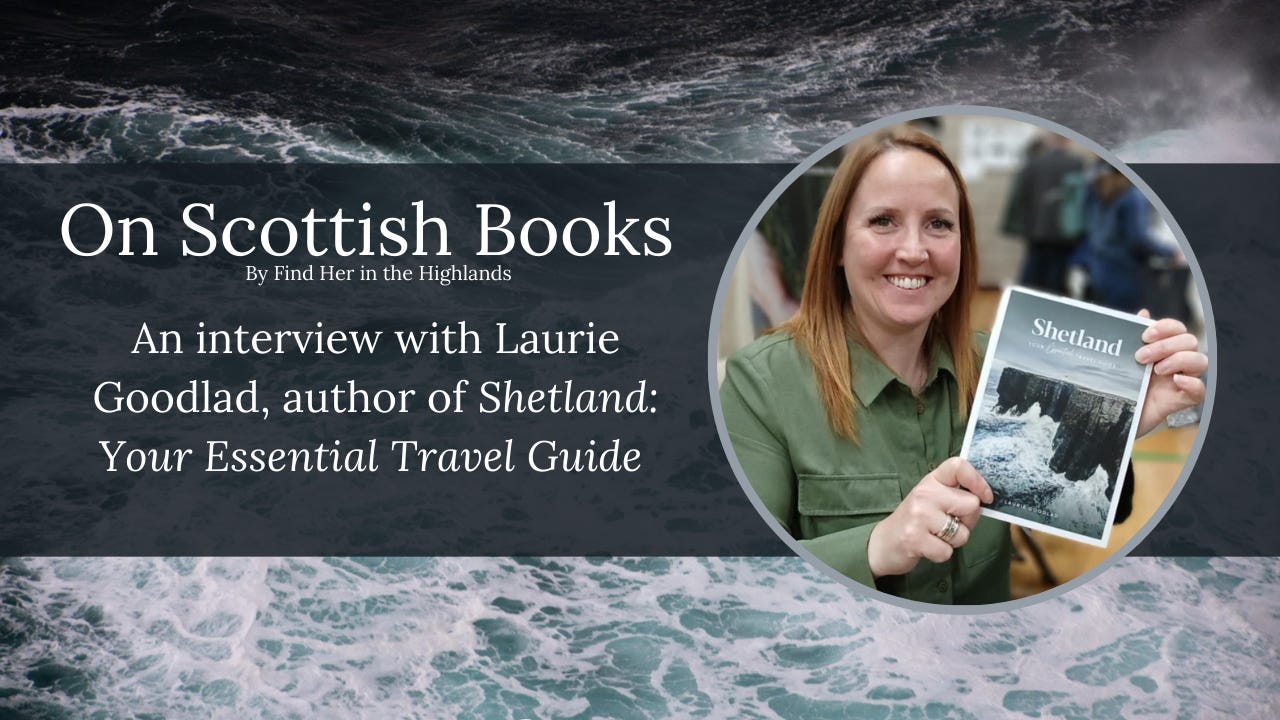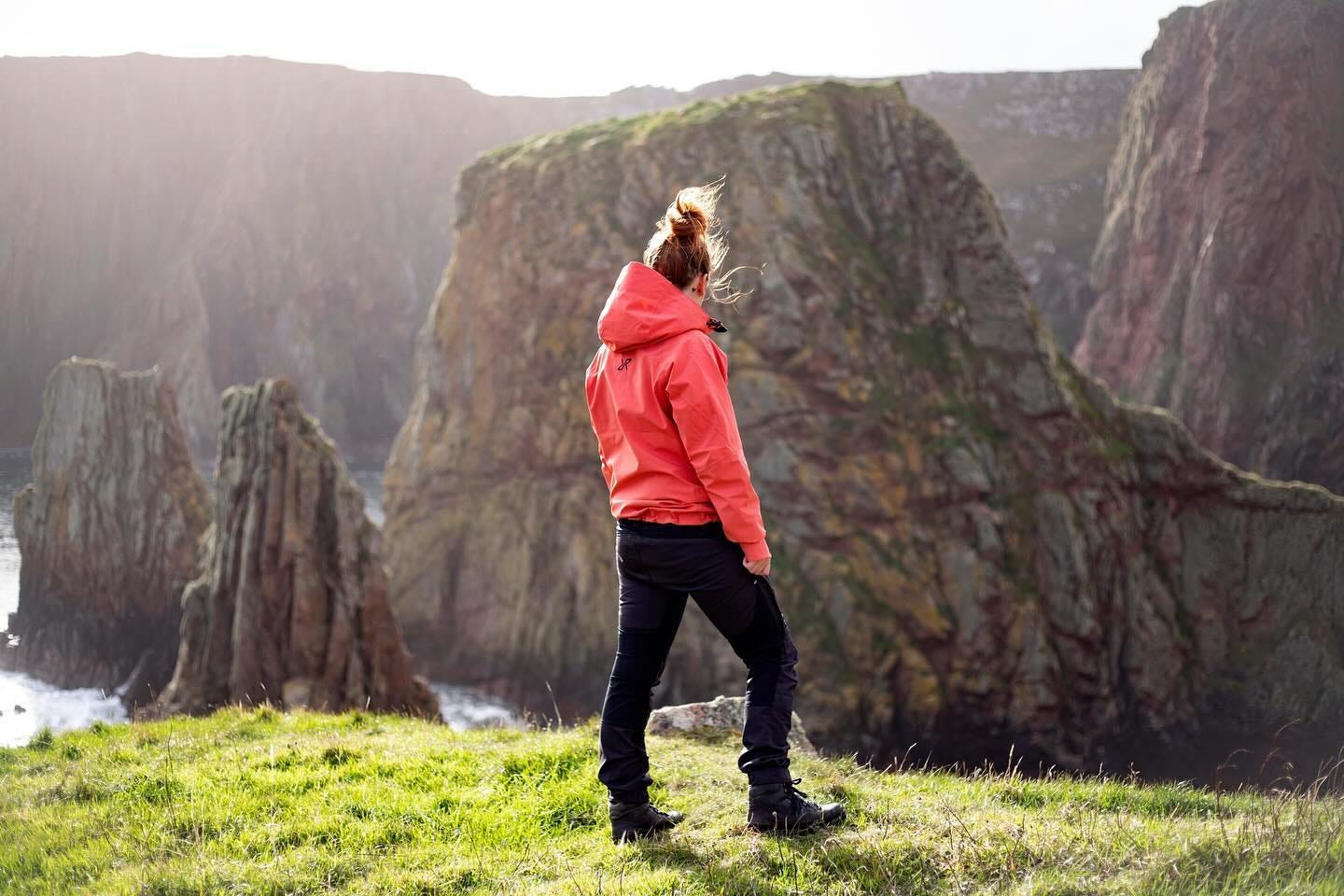Book Spotlight - Shetland: Your Essential Travel Guide
An Interview with Shetland native and travel writer Laurie Goodlad.
Shetland Wool Adventures recently sent me a review copy of the stunning new Shetland guidebook from Laurie Goodlad (aka Shetland with Laurie) and I proceeded to drool over the beautiful photos - and stare off wistfully into the distance imagining the sea spray on my face. Everything about the book is beautiful - the feel of the pages, the atmospheric photos, the easy to navigate layout, and that magical feeling of wanderlust it evokes.




Inspired by the book, I had an interesting conversation with Laurie, who was gracious enough to answer a few questions for me.
Lilly: You mentioned that your island ancestry goes back generations, what interesting tidbits do you know about your ancestors/ancestral places?
Laurie: Yes, it's incredible to trace back the lines on the family tree and navigate all the branches. I think that I managed to get 12 generations back, which is incredible, and something that most people can only dream about. We're very lucky to have excellent family history resources in Shetland - these are all listed in the guidebook too.
I've spent a lot of time down rabbit holes of research looking at long-forgotten faces of the family tree, and one that always sticks in my imagination is the story of my great-great-grandfather who lived on a now-uninhabited island with his family, including my great-grandmother, Tam. One afternoon, he and his sons went out to look for driftwood and while at sea, he had a heart attack in the boat. His young sons, unable to pull the oars against a gathering storm, left him on an exposed skerry to go and get help. When they returned, the sea had washed him away. Not long after this, my family abandoned the island, and I don't think Granny Tam ever returned.
I love all the oral history that's passed down through the generations, connecting us to people and places, it makes me very grateful to live where I do.
Lilly: That is such an amazing and heartbreaking bit of history. Have you visited the island where they lived?
Laurie: Yes, I visit often, it's a beautiful island. I wrote a blog about my great-grandfather that you can see here.
Lilly: How many of the other dozens of uninhabited Shetland islands have you set foot on? Those call to me most!
Laurie: I think I've been on 11 uninhabited Shetland islands: Oxna, Papa, Hildasay, Linga, Langa, South Havera, Sanda Stoura, Green Holm, Vementry, Mousa, Noss ... There are more I'd love to get to: on this list for this year are: Brother Isle, Uyea (Unst), Samphrey and Colsay.
Lilly: Is Shetland experiencing a tourism boom alongside the one much of Scotland has seen?
Laurie: Oh yes, Shetland seems to go from strength to strength in terms of tourism, and much of this is fueled by the ever-popular Shetland TV show which is based on the bestselling novels by the author Ann Cleeves - so many people come here on the trail of DI Jimmy Perez, and now, his replacement, DI Calder. But more than this, recent BBC documentaries such as Wild Shetland have gone a long way to paint a portrait of Shetland as one of the last great wildernesses, putting it firmly on the map for people who want to experience the wildlife and the breathtaking landscapes.
Lilly: I love the May seasonal highlight of eating rhubarb. What's your favorite dish?
Laurie: Oh I love rhubarb! I anticipate it every spring and just adore the stuff. My favourite recipe is a crumble recipe that I got many years ago from an ex-boyfriend's mam. It remains my favorite to this day. I always make sure I stew a stock and put it in the freezer so that I can enjoy a crumble long after the rhubarb has passed. Supermarket rhubarb just doesn't get a look in!
Lilly: I was surprised to learn that Up Helly Aa only harks back to Victorian times. Are there any longer standing festivals and traditions that you feel better represent Shetland?
Laurie: Great question, and to be honest, I'm not sure that there is. Shetland has a lot of festivals, including the Folk Festival, Wool Week, and Shetland Noir. However, these are all relatively modern too. Up Helly Aa probably remains the longest-standing celebration and it's fair to say that many of the traditions - like fire - are much older. In Shetland there were many pagan celebrations around midwinter that involved fire, feast and celebration - I guess the Victorians just formalised it and added the Viking element!
Lilly: How cool that you are the curator of Scalloway Museum! Do you have a favorite artifact or display right now?
Laurie: One of my favorite artifacts is actually a cast iron three-legged pot which contains ashes collected from Gallow Hill in Scalloway, where witches were tried and executed. The pot of ashes is all that remains of these women - and one man - tried and executed in Shetland in the 17th century.
Lilly: Did you ever entertain the thought of settling down elsewhere after your studies or did you always feel the pull to return home?
Laurie: I did, yes. I studied history and politics at Dundee University and always imagined that I would move to Edinburgh and work for a few years before I came home. I knew I'd always come home, but I did want to stay on the mainland for a few years after graduation. However, the universe had different ideas. On the day of my final uni exam, I was offered a full-time contract to work as the curatorial assistant at Shetland Museum & Archives and, as museum jobs are like hen's teeth, it was a no-brainer that I pack up my life and head back home.
Lilly: I'm a Pictish nut, so I'm curious what traces of the Picts are seen in the Shetland archaeological landscape?
Laurie: We have some Pictish carvings that are pretty cool - you can see these in the Shetland Museum and National Museum of Scotland. We also have a few excavated sites that date to the late Iron Age, including some fabulous wheelhouses at Jarlshof and a reconstructed wheelhouse at Old Scatness.
Lilly: What projects or trips are you looking forward to next?
Laurie: I've had a very exciting week as I've started working on book two. This one is very different to the guidebook. It's a blend of memoir and history that tells the story of an island community and my childhood growing up within it. I tell this story through the lens of the people who have touched my life: those who I knew growing up, those that I share a branch of the family tree with, or those who I have researched in my professional career as a historian. I actually just submitted my proposal and a draft chapter this week, so keep your fingers crossed for me.
In terms of trips, I have a ski trip next month to Norway - also at 60 degrees North! - a friend's wedding in Greece in May and then Sicily in October. Closer to home, I have a blog campaign in Argyll next month and I'm toying with the idea of going back to Faroe as part of the research for my new book. I usually try to spend my full summer in Shetland, exploring some of the islands that I haven't been to (those uninhabited ones we've spoken about) and, as a family, we love to take the caravan on weekend adventures around home.
Lilly: One last question question - do you have a favorite phrase or word that is unique to Shetland’s vocabulary?
Laurie: Ooo, a favorite phrase. Tough one. I love that we have our own name for all the seasons: voar, simmer, hairst and Yule. I also love that the flora and fauna have a local name -- the Arctic tern is a tirrick, the oystercatcher is a shalder and the curlew is a whap, for example.
I also love our insults: if you tell someone they have a 'face lik a run daek end', you're telling them that they are very ugly and have a face like a fallen drystone wall. Or 'a face like burst brunnie' is a face like a burst fruit cake!
I also like some of our most commonly used words: peerie is small. Peerie mootie is very small, spaegie is muscle fatigue and a smooriken is a kiss.
You can visit Shetland Wool Adventures and Shetland With Laurie to learn more about the book and supporting these local island businesses.
Thank you so much to Laurie for taking the time to chat with me. I haven't been to Shetland but I certainly hope to visit one day, and I’ll use this gorgeous book to help me plan!
Thanks for reading!
Lilly






I imagine that people who are academically and culturally knowledgeable on Shetland are relatively few - for most, even British people, it’s just a scattered bunch of dots on a world map.
Focus in and we begin to understand those dots represent a remarkable and unique concentration of early human activity - migration, settlement, invasion and acculturation suffuse the very turf and sheltering stones.